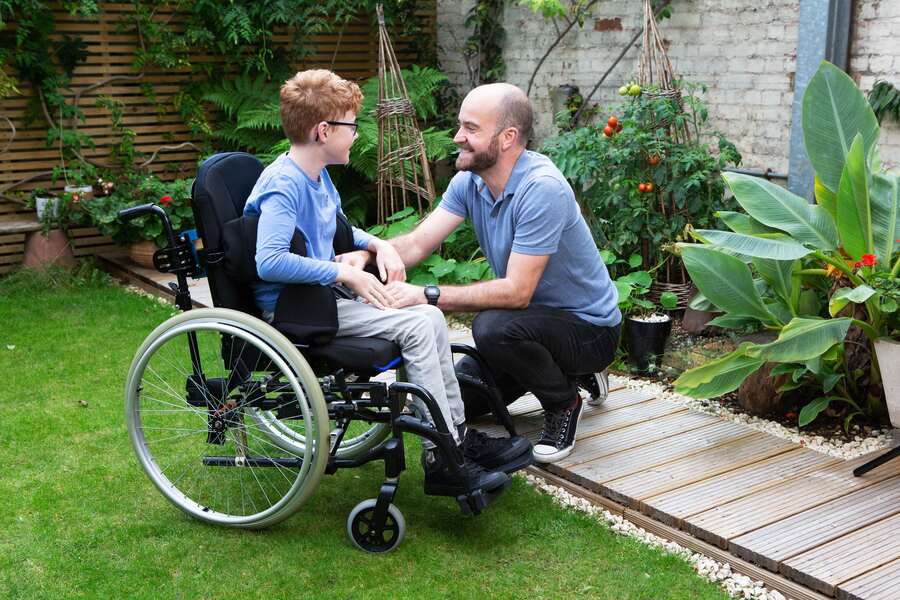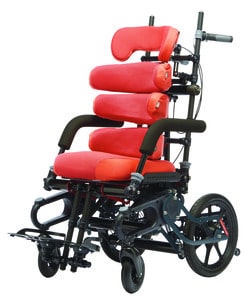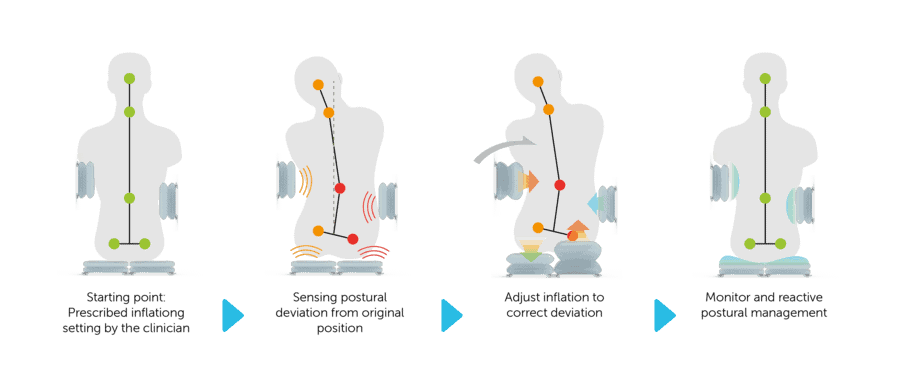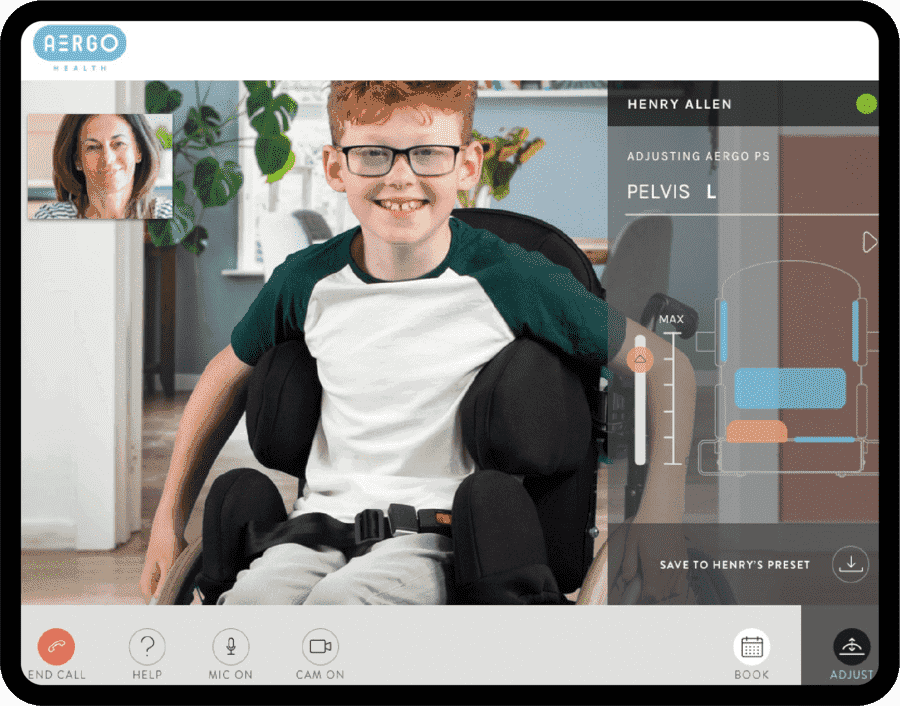Let’s Get It Clear: Managing progressive disorders

Many people need assistive products to help overcome physical, mental, or ‘behavioural’ impairments. For many people these impairments are not the same from day to day, or even from hour to hour. This can be particularly true for those with neurological or neuromuscular disorders. What can we do to help?
When we consider the populations, especially amongst the paediatric and younger adult age ranges, who have mobility restrictions and require wheelchairs, many of these are people who have had developmental brain injuries occurring before or after birth, or people with neuromuscular disorders.
Many of these latter disorders are genetic, and therefore can present from a very young age. They also tend to be progressive in that the individuals’ functional abilities reduce over years and months as they increasingly lose muscle control, and therefore need even more intervention over and above that needed as a result of a child’s normal growth process.
Children born with progressive neuromuscular disorders such as a muscular dystrophy (MD) or spinal muscular atrophy (SMA) require an increasing range of specialist equipment as their condition progresses. This can include a wheelchair for mobility; special seating to provide postural support for the pelvis, trunk and head; and a standing frame to counteract the effects of prolonged sitting.
Time spent in standing equipment can improve upper limb, respiratory, and digestive functions, as well as have a positive impact on joint development and bone strength. There are some excellent guides, such as that from the Muscular Dystrophy Campaign1, around equipment choices for helping manage these conditions.
Postural support
Postural support devices for children affected by neuromuscular disorders have developed historically for stabilising muscle tone, preventing spinal deformity, and enabling functional movements, and can involve specialist seating systems that are highly adaptive mechanical systems that provide full body support with a series of lateral supports – for example see Figure 1.
These systems ensure the occupant is held in a ‘neutral’ posture, and may require adjustment by a specialist as the occupant’s needs change, which can be many times a year. This follow-up ordinarily only looks at the occupant’s needs during the short period they are in the clinic.
Though necessary for the bigger picture, this ‘static’ seating approach does not allow for the needs of the occupant as they change through the day, with changing levels of fatigue, and changing activities.
Dynamic support
What is needed is to add some dynamic seating elements (both passive and active examples have been covered in some detail in a previous article in this series2). Dynamic postural management seating systems are designed to move with the occupant while maintaining the occupant’s contact with the support surfaces.
For wheelchair occupants who extend or move frequently due to high muscle tone, these types of solutions are clinically proven to protect them from injury and reduce damage to the seating system3. In addition, movement in the system also helps to train functional movements and provide sensory input3, which is critical to the development, independence, and quality of life of a child.
Alongside the dynamic options built into the wheelchair frame, the powered dynamic options which might be of value to an occupant could be tilt or recline, and adjustable leg supports. Taking this further would be powered sit to stand, depending on the progressive state of the disorder. These are gross adjustments.
Finer control can be offered by dynamic postural support devices, such as chest or shoulder harnesses, with the shoulder straps created from stretch materials which help the occupant regain their original posture after moving out of it for functional purposes.
Dynamic postural management
Finer dynamic postural management can best be achieved by an active dynamic system within the seating system, which will allow for localised active postural management, and adjustment, as the day progresses, and the occupant’s needs change.
Over the years, manufacturers have come up with some novel approaches, such as alternating pressure packages akin to those used in alternating pressure mattresses, but these have been aimed at protecting skin tissues by relieving pressure from alternating areas. However, users have found that these systems do not help their positioning needs.
In contrast, a system with individually controlled air-filled bladders in the lumbar, thoracic laterals, thigh, and left and right pelvic support regions of a seating system is providing the means to manage the occupant’s changing seating needs during the day – this is encapsulated in the Aergo PS seating system (Figure 2).
The core element of the Aergo PS is that the system is set up within parameters input by the clinician. As the occupant moves, the air cells respond by changing the air content to help the individual maintain their position (Figure 3). During set-up specific management can be provided for posterior and anterior pelvic tilt tendencies, as well as for pelvic obliquities, windswept hips, a scoliotic spine, etc. (By the way, the system can also be set up in cycle mode wherein the pressures oscillate between the different cells in a three-minute cycle!)
Day-to-day management and adjustment can be carried out through a clinician web portal with the occupant in full view, and with the clinician able to reset the parameters for each air-cell as required. This is a great tool for managing quickly a larger caseload, with quick adjustments possible for a number of clients in a short time, without the need for a person-to-person appointment.
On top of this, the occupant can use an app on their smart phone to make minor adjustments, either as the day progresses, or help achieve different activities.
Summary
Most prescribed seating systems are static, and meet only the basic positioning needs at the time of set up. Many wheelchair clients, however, need minor changes to help achieve different functional goals, and for those with neuromuscular disorders in particular, to offset the consequences of fatigue affecting their motor functions over the day. The provision of both passive and active dynamic systems will be of benefit to both children and adults, particularly those with progressive disorders.
References
1 Muscular Dystrophy Campaign (2011) Wheelchair Provision for Children and Adults with Muscular Dystrophy and other Neuromuscular Conditions: Best Practice Guidelines
2 ter Haar MB (2022) Let’s Get It Clear: Dynamic Seating – What does it involve? THIIS
3 Lange ML et al (2020) RESNA Position on the Application of Dynamic Seating
Further items can be found at www.beshealthcare.net. If you are interested in receiving further information on the topic, please contact 
Dr Barend ter Haar has been involved in seating and mobility for over 30 years, including lecturing internationally and developing international seating standards.
Click to read more from the ‘Let’s get it clear’ series from Dr Barend ter Haar




